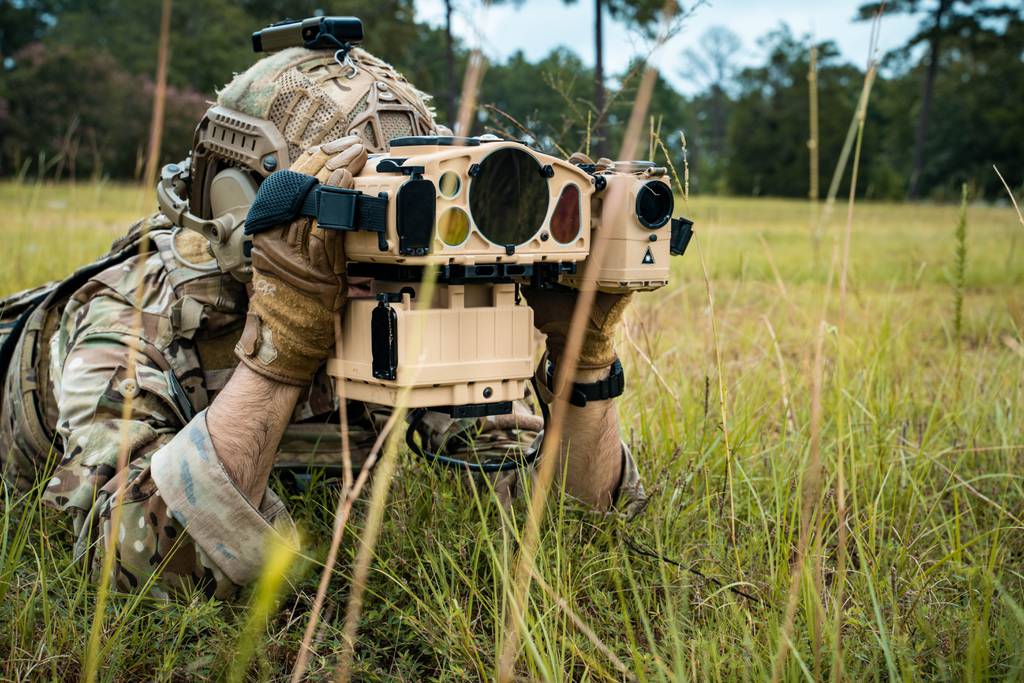
This article explores the impact and potential of next-generation combat gear, soldier wearable technology, augmented reality for soldiers, smart textiles in military clothing, and integrated soldier systems.
It delves into the advancements made in equipping future soldiers with cutting-edge technology to enhance their capabilities on the battlefield.
Through a thorough analysis of these innovations, this article aims to provide a comprehensive understanding of the evolving landscape of soldier systems and its implications for the protectors of tomorrow.
Key Takeaways
- Advancements in combat gear such as lightweight ceramics and nanofibers improve durability and mobility, enhance protection against ballistic threats, and provide real-time information sharing for better coordination.
- Soldier wearable technology, including exoskeletons and biometric monitoring, enhances physical capabilities, reduces fatigue, tracks vital signs, and provides real-time data for informed decision-making, improving capabilities and safety on the battlefield.
- Augmented reality for soldiers enhances situational awareness and information display, allowing for the overlay of virtual information onto real-world surroundings. It also provides real-time tactical information, remote guidance and support from commanders, and integration with other soldier systems for comprehensive capabilities.
- Smart textiles in military clothing, such as multifunctional fabrics, monitor vital signs and detect environmental conditions, provide protection against chemical or biological threats, improve comfort and mobility, and allow soldiers to perform at their best in challenging environments.
- Integrated soldier systems enable seamless and effective communication between soldiers, provide real-time communication and situational awareness, improve soldier performance through innovative technologies, and monitor vital signs and detect fatigue levels, ultimately revolutionizing modern warfare through increased efficiency and optimization.
Advancements in Combat Gear
Advancements in combat gear have revolutionized the capabilities and effectiveness of future soldiers. Technological advancements have played a pivotal role in the evolution of gear, enabling soldiers to enhance their performance on the battlefield.
The integration of advanced materials, such as lightweight ceramics and nanofibers, has significantly improved the durability and mobility of combat gear. Soldiers now have access to state-of-the-art equipment that provides enhanced protection against ballistic threats while minimizing weight burdens.
Furthermore, advancements in communication technology have facilitated real-time information sharing among troops, enabling better coordination and situational awareness on the battlefield. Augmented reality (AR) systems integrated into combat helmets offer soldiers vital information regarding their surroundings, including maps, threat detection data, and live video feeds.
These advancements not only enhance soldier safety but also empower them with superior tactical advantages for mission success.

Soldier Wearable Technology
Soldier wearable technology is revolutionizing the way soldiers engage in combat. One significant advancement in this field is the integration of exoskeletons into soldier gear. Exoskeletons are mechanical structures worn on the body to enhance physical capabilities, such as strength and endurance. By incorporating exoskeleton technology into their gear, soldiers can carry heavier loads and maneuver more efficiently on the battlefield. This integration allows for increased mobility and reduced fatigue, ultimately improving overall performance.
Another key development in soldier wearable technology is biometric monitoring. Soldiers wear devices that track vital signs, such as heart rate, blood pressure, and body temperature. This real-time data provides invaluable information about a soldier's physical condition during combat scenarios. It enables commanders to make informed decisions regarding troop deployment and ensures timely medical attention if necessary.
In conclusion, exoskeleton integration and biometric monitoring are essential components of current soldier wearable technology. These advancements not only enhance soldiers' capabilities but also contribute to their safety and well-being on the battlefield. The continuous evolution of these technologies will undoubtedly shape the future of warfare by empowering tomorrow's protectors with unprecedented levels of efficiency and effectiveness.
Augmented Reality for Soldiers
The use of augmented reality technology has become increasingly prevalent in the military, providing soldiers with enhanced situational awareness and information display capabilities.
Augmented reality (AR) allows soldiers to overlay virtual information onto their real-world surroundings, giving them access to critical data such as maps, enemy positions, and mission objectives.
This technology is particularly useful in training simulations, where soldiers can practice various scenarios in a realistic yet controlled environment. AR enables soldiers to receive real-time tactical information, improving their decision-making abilities and overall effectiveness on the battlefield.
By integrating AR into soldier wearable tech, commanders can remotely provide guidance and support to individual soldiers or entire units. Moreover, AR systems can be integrated with other soldier systems such as smart textiles and communication devices, creating a comprehensive network that enhances the capabilities of future soldiers.

Smart Textiles in Military Clothing
One important aspect of military clothing is the integration of smart textiles. These advanced fabrics have the ability to enhance soldier performance by providing various functionalities and capabilities.
Smart textiles are designed to be multifunctional, offering features such as sensing, actuating, and controlling mechanisms. They can monitor vital signs, detect environmental conditions, and even provide protection against chemical or biological threats.
By integrating these technologies into military clothing, soldiers can have real-time access to information about their own health status and surroundings. Additionally, smart textiles can improve comfort and mobility by incorporating stretchable and breathable materials that adapt to different body movements.
These advancements in military clothing not only contribute to the overall well-being and safety of soldiers but also enable them to perform at their best in challenging environments.
Integrated Soldier Systems
Integrating advanced technologies into military equipment can enhance the capabilities and performance of soldiers in various operational environments. One area where this integration is particularly crucial is in military communication systems. Integrated soldier systems aim to provide seamless and effective communication between soldiers, ensuring that critical information is relayed accurately and efficiently. These systems employ a range of technologies such as radios, GPS trackers, and encrypted networks to enable real-time communication and situational awareness among troops on the battlefield.
Furthermore, integrated soldier systems also focus on improving soldier performance through the use of innovative technologies. These include sensors that monitor vital signs, detect fatigue levels, and assess overall physical condition. By collecting and analyzing this data, commanders can make more informed decisions regarding soldier deployment and resource allocation.
By incorporating cutting-edge technology into military equipment, integrated soldier systems have the potential to revolutionize modern warfare by increasing communication efficiency and optimizing soldier performance in demanding combat situations.

Frequently Asked Questions
How do advancements in combat gear contribute to the overall effectiveness and safety of future soldiers?
Advancements in combat gear enhance soldier capabilities and ensure their survival. These developments provide soldiers with improved protection, communication, situational awareness, and mobility, leading to increased effectiveness on the battlefield and ultimately enhancing their safety.
What are the key features and capabilities of soldier wearable technology?
Soldier wearable technology encompasses various key features and capabilities. These include advanced sensors for real-time tracking, communication systems for seamless connectivity, integrated displays for augmented reality applications, and ergonomic designs to enhance comfort and mobility. Significant advancements in combat gear have enabled these technologies to greatly improve the effectiveness and safety of future soldiers.
How does augmented reality enhance the situational awareness and decision-making capabilities of soldiers?
Augmented reality training enhances soldier situational awareness by providing real-time visual information and overlays. This improves tactical decision-making capabilities as soldiers can assess their environment, identify targets, and plan actions more effectively.
What are the potential applications of smart textiles in military clothing and how do they improve soldier performance?
Smart textiles in military clothing have the potential to greatly enhance soldier performance. These revolutionary advancements can improve thermal regulation, provide ballistic protection, monitor vital signs, and enhance comfort and mobility, ultimately increasing overall operational effectiveness on the battlefield.
How do integrated soldier systems combine various technologies to create a more seamless and efficient soldier experience?
Integrated soldier systems combine various technologies to enhance communication and increase mobility for soldiers. These systems integrate advanced communication devices, wearable tech, and smart textiles, providing a seamless and efficient experience that improves overall soldier performance.
 GadgetsProduct ReviewsSmart DevicesDronesVirtual DevicesPrivacy PolicyTerms And Conditions
GadgetsProduct ReviewsSmart DevicesDronesVirtual DevicesPrivacy PolicyTerms And Conditions
